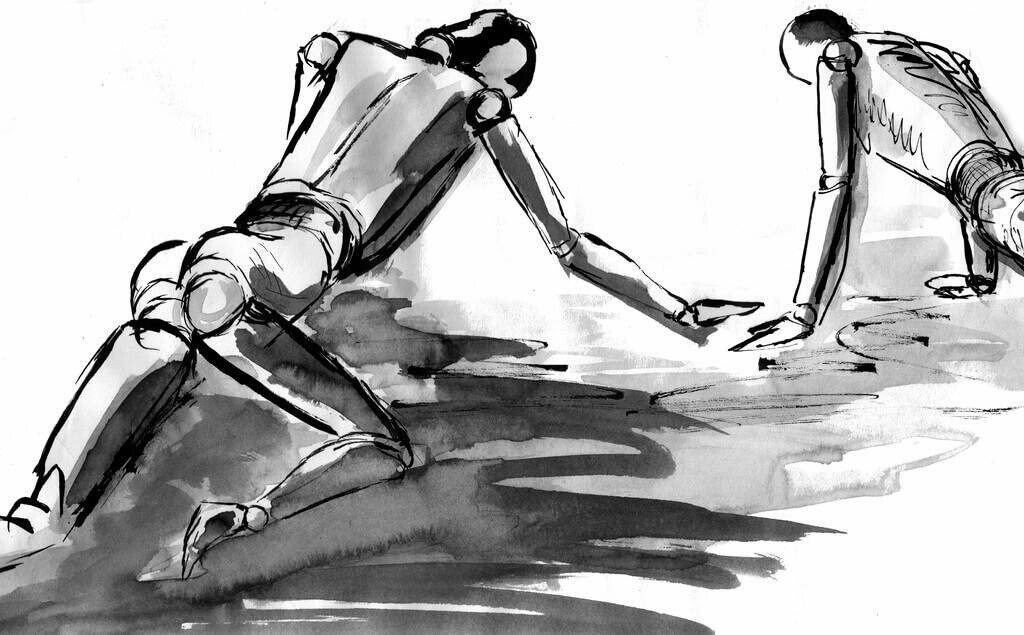Kneeling transcends mere physical posture; it reflects our emotional and spiritual life. Discover how the knee serves as a mirror to our internal struggles between submission and self-assertion and how this gesture can signify both surrender and respect.
The Spiritual Symbolism of Kneeling: Between Submission and Humility
What does the knee represent in our life?
The knee, essential in the anatomy of the leg, bears the body’s weight and facilitates everyday activities such as walking, climbing stairs, or sitting. Beyond its physical function, the knee embodies the gateway to acceptance, symbolizing both surrender and submission.
Kneeling: An Act of Submission or a Display of Humility?
Kneeling can be interpreted in various ways: from a display of humility and subordination to resistance against “bending the knee” reflecting a proud and inflexible stance. This duality is manifested in multiple aspects of life, from love to faith, through work and social interaction.
The knee symbolizes our ability to be flexible, to let go and step back when necessary to achieve our goals.
In a kneeling position, a combatant prepares to aim with precision.
The knee not only facilitates the gesture of a lover swearing eternal love but also that of the repentant asking for forgiveness. It is the posture of a believer in prayer and a worker in their daily labor. Each of these acts reflects varying degrees of humility, submission, or need.
Emotional Conflict and the Knee
The Dynamics of Power and Submission
Involuntary Submission
Often, people find themselves in situations where they must kneel out of obligation, not by choice, facing a dilemma of power and authority that is particularly prevalent during adolescence.
This perspective allows us to understand that beyond its biomechanical function, the knee and the act of kneeling have a profound spiritual and emotional symbolism. Reflecting on these aspects can offer insights into our own emotional issues and how we face the challenges of submission and authority in our lives.
Knee Pain: Between the Physical and Emotional
Emotional Significance
Knee pain can arise not only from physical causes but also emotional ones. Often, this discomfort reflects our resistance to accepting situations, emotions, or changes that contradict our beliefs or customs. Inflexibility, both physical and emotional, can manifest as pain, especially when we resist “bending the knee” or submitting to difficult circumstances.
Devaluation Conflict
It occurs when we stop participating in activities we once enjoyed, such as a sport, which can generate a feeling of worthlessness or lack of value.
Direction Conflict
Happens when we are forced to follow a path we do not want, living an internal conflict of submission and devaluation.
Indecision Conflict
It reflects the feeling of not following the correct path in life.
Additionally, specific conditions like synovial effusion or meniscal issues can symbolize a lack of adaptability or resistance to life’s “orders.”
Emotional Anatomy of the Knee
Patella
Symbolizes our future projects, both personal and professional.
Tibial Plateaus
Symbolically associated with justice and our capacity to decide whether or not we can face certain challenges.
Laterality and Its Emotional Impact
Right Knee (feminine)
Represents unfulfilled desires, the want to leave or change, but feeling unable to do so.
Left Knee (masculine)
Reflects decisions to leave or change that, even though made, leave a feeling of remorse or guilt.
Recommendations for Better Overall Health
To relieve and prevent knee pain from a holistic perspective, developing flexibility and humility is crucial. This includes learning to accept different viewpoints and adapting to new situations. Moreover, astrology suggests that those influenced by the sign of Capricorn, governed by Saturn, may be particularly prone to knee problems due to their tendency towards rigidity.
Kneeling before life and its continuous flow is a practice that can enrich our emotional and spiritual health, opening pathways towards a better understanding and acceptance of our limitations and challenges.
Transform your emotional and spiritual life with a personalized tool
Discover the power of Biodecoding combined with Kabbalah. Through your Personal Kabbalistic Tree, designed based on your name and date of birth, you’ll receive a practical guide to work on your emotions and achieve holistic well-being.





